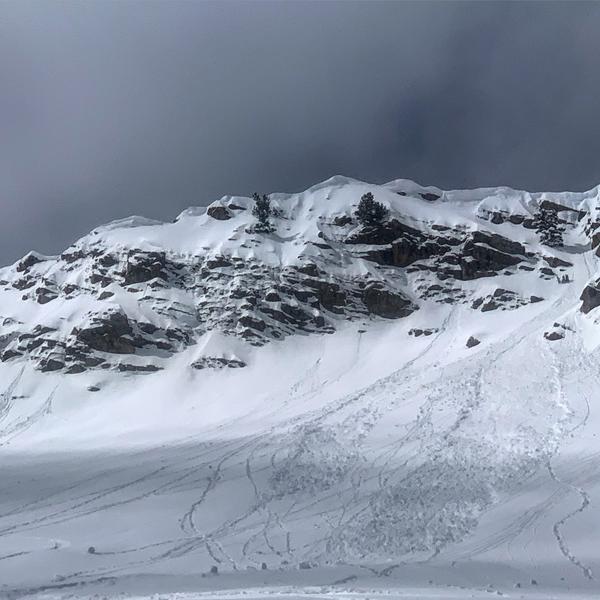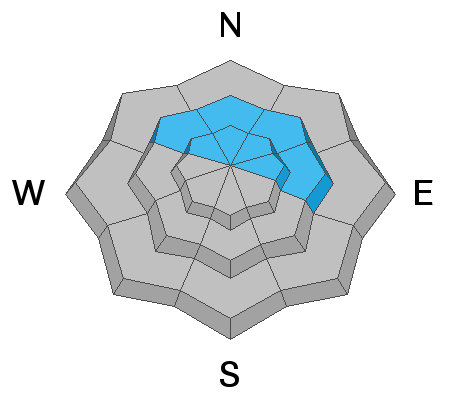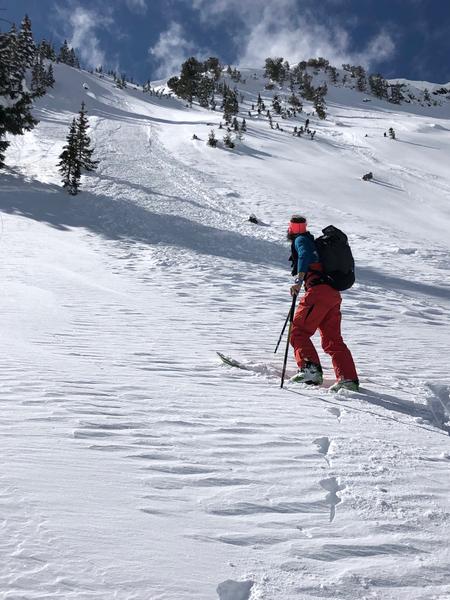Aided by clear skies and light winds, the strong March sun will quickly go to work today and heat east, south, and west aspects, including shaded or northerly aspects below about 8000'. Although I am expecting most activity to be wet loose (such as Mark White's photo below from yesterday in Cardiff Fork in the Salt Lake mountains), I also think cohesive slabs of damp/wet snow are possible (such as yesterday's wet slab in the Snowbasin backcountry), where these wet slabs could break out more widely and run on sun crusts that formed on Saturday. I do think the generally minor wet activity the past few days has slowly allowed the snowpack to adjust to warming, but today will be a more significant warm-up and I am expecting much more widespread wet activity - including larger avalanches - than the past two days. Move off of and out from underneath any steep slope once you see any sign of warming - such as rollerballs, natural wet sluffs, and unsupportable snow.

Cornices - Avoid traveling across or underneath corniced ridgelines as today's warming may make cornices reactive. The cornices are particularly large along the ridgelines in the Snowbasin backcountry.
In 2016, Drew Hardesty presented on an analysis of Utah avalanche fatalities (
link) at the ISSW workshop in Breckenridge, CO which mentions 5% of Utah avalanche fatalities involve cornice falls.












